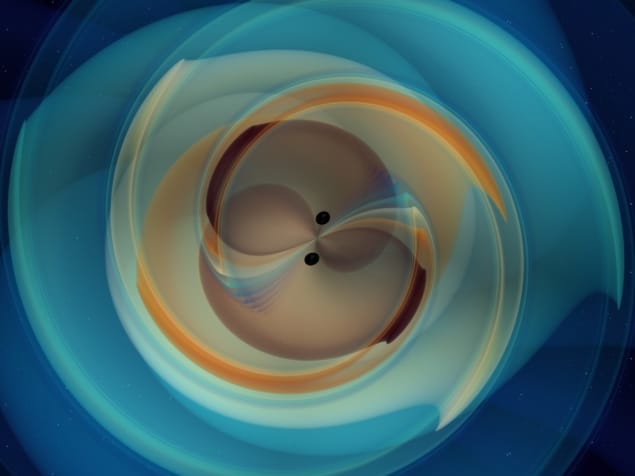
Physicists working on LIGO–Virgo have confirmed the detection of 39 gravitational-wave signals by the observatories in April–October 2019. This brings the total catalogue of confirmed observations of gravitational waves to 50.
While these 39 signals have been public knowledge for some time – indeed we have covered several of them in Physics World – this announcement from LIGO–Virgo comes as the detections are described in papers that have been submitted for peer review.
According to the LIGO and Virgo collaborations, the upturn in the number of detections was achieved by making significant improvements to the gravitational-wave detectors – which are kilometre-scale interferometers in the US and Italy. Upgrades included boosting the laser power, better mirrors and the use of quantum squeezing technology.
Black hole versus neutron star
Most of the 39 new signals appear to come from the merger of two black holes, but the haul also includes the second signal ever received from a pair of merging neutron stars (“LIGO–Virgo claims another neutron-star merger”) and also what could be the first ever signal from the merger of a black hole and a neutron star (“Black-hole–neutron-star merger may have been spotted by LIGO–Virgo”).
Also included in the 39 is the gravitational-wave signal from the most massive merger of two black holes ever seen (“LIGO–Virgo spots its most massive black hole merger so far”). This was the topic of a Physics World Weekly podcast in September that featured gravitational-wave expert Laura Nuttall (“Why that massive black-hole merger is important…”).
With the expanded catalogue, researchers could study the remnant objects produced by the mergers. They were able to rule out the creation of “echoes” after the main merger signals, which suggests that remnants behave as predicted by Einstein’s general theory of relativity.
The 39 signals were detected in the first half of run three of the observatories and scientists are still analysing data from the second half. Meanwhile, LIGO and Virgo are undergoing further upgrades and will be joined in their fourth observing run by the KAGRA detector in Japan.
The papers are available on the LIGO website.



